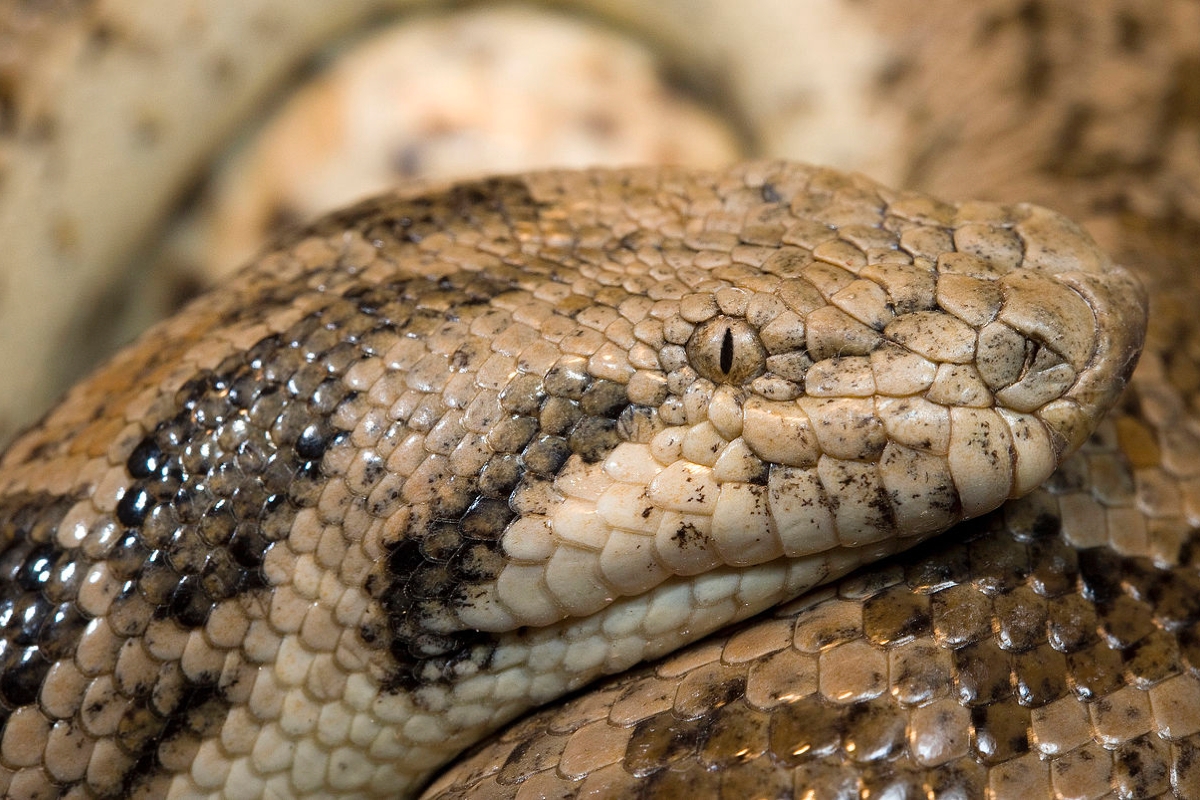The dwarf sand boa (Eryx miliaris) is a snake from the family of Boidae.
Description
The length of the body is 40 - 80 cm. The muscular body is slightly flattened with a small head, slightly flattened.
A distinctive feature of the species is the location of the eyes: small eyes are located on top of the head and pointing upwards. Iris yellow-amber, iris black.
It has sharp small teeth that bite unpleasantly, but do not contain poison. The color of the snake camouflage - yellow-brown with a pattern in the form of small scab or small spots and strips of brown.
Habitat
Distributed in the west of Kazakhstan, Turkmenistan, Uzbekistan, in Russia - in the Eastern Ciscaucasia. The main biotope is sandy deserts, but it also occurs in clayey deserts.
Lifestyle
The dwarf sand boa is ideally suited to the burrowing way of life: its eyes and nostrils are shifted to the upper part of the head, which makes it possible to observe prey unnoticed from the sand. It feeds on lizards and rodents, which it catches with a quick throw and strangles with two or three rings. Active at any time of day.
Reproduction
Like most boas, the sand boa is viviparous: in July-August the female gives birth to ten cubs measuring 12-13 cm. Maturity is achieved at the age of 4 years at a size of about 60 cm.
Captivity
The sand boa quickly gets used to people, they live perfectly fine in captivity. Boas should be kept in terrariums of horizontal type (60x40x30 cm) on a large layer (10-30 cm) of sandy or clayey soil. The temperature of the contents is 28-35 °C in the daytime and 20-22 °C at night. The total moisture level should be low - 50%, but in order to avoid moulting complications, the terrarium should have a humidity chamber or a soil humidification system from below. It must have a drinker.
Boas are unpretentious in terms of food: they eagerly eat mice and rats, lizards, chickens. You can teach them to eat warm beef or chicken meat.
To stimulate reproduction, hibernation is desirable for 2-3 months, but a temporary decrease in temperature and fasting may be enough. It happened before, that animals that live long in captivity or bred in captivity have mated and brought offspring without stimulation.
Newborn snakes, unlike adults, do not always start eating on their own. They should be offered nude mice, insects (crickets, cockroaches) and in the event of a prolonged refusal of food, they will have to be fed forcibly.


